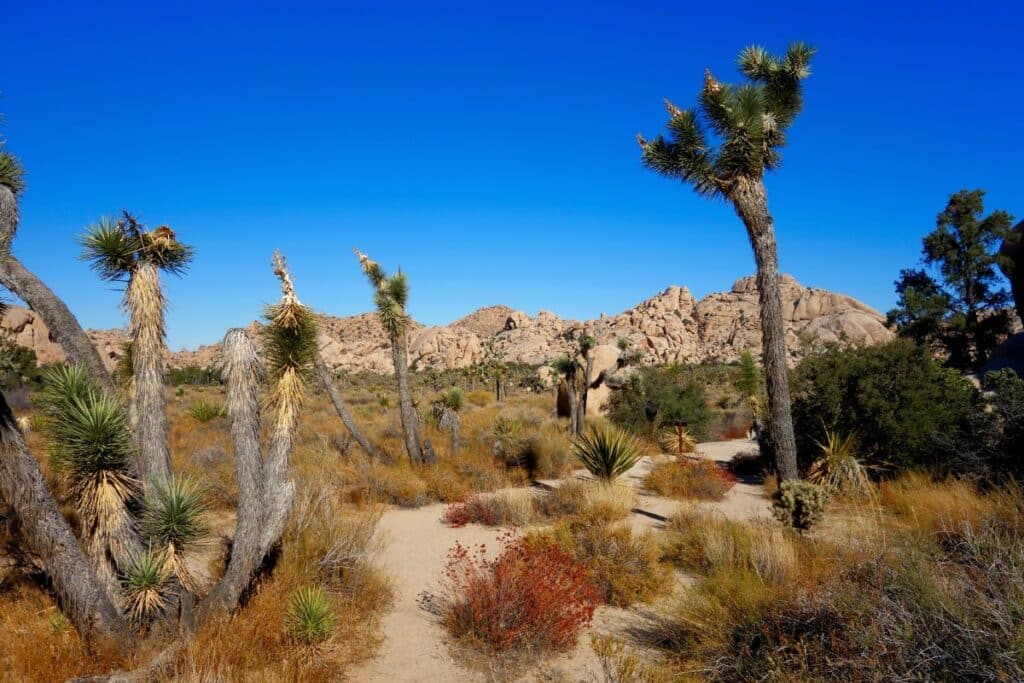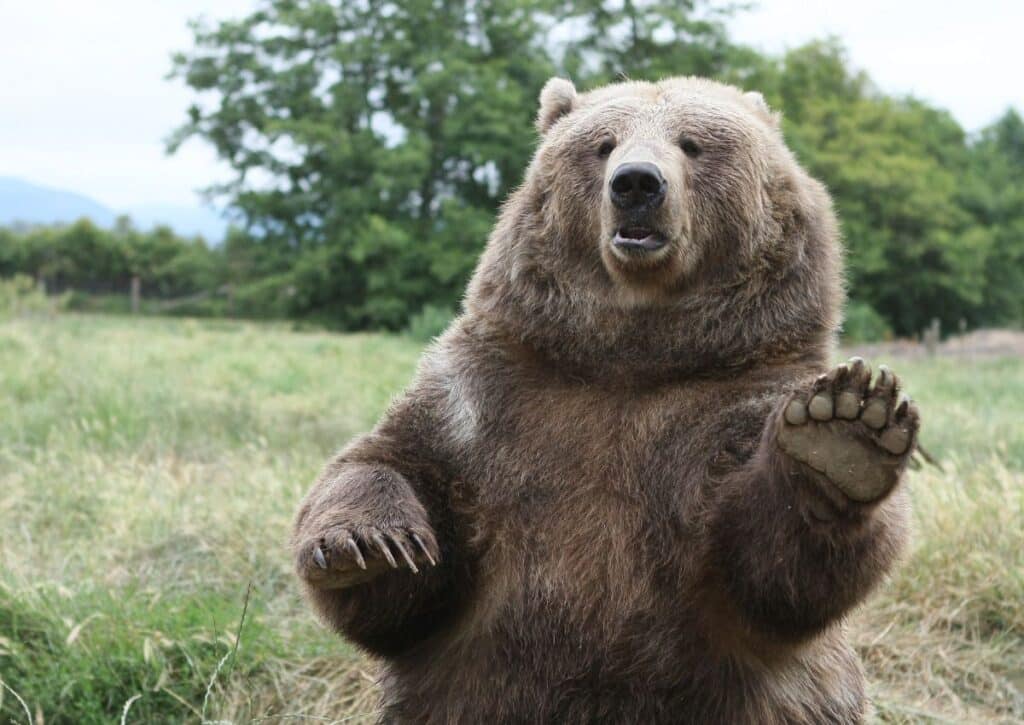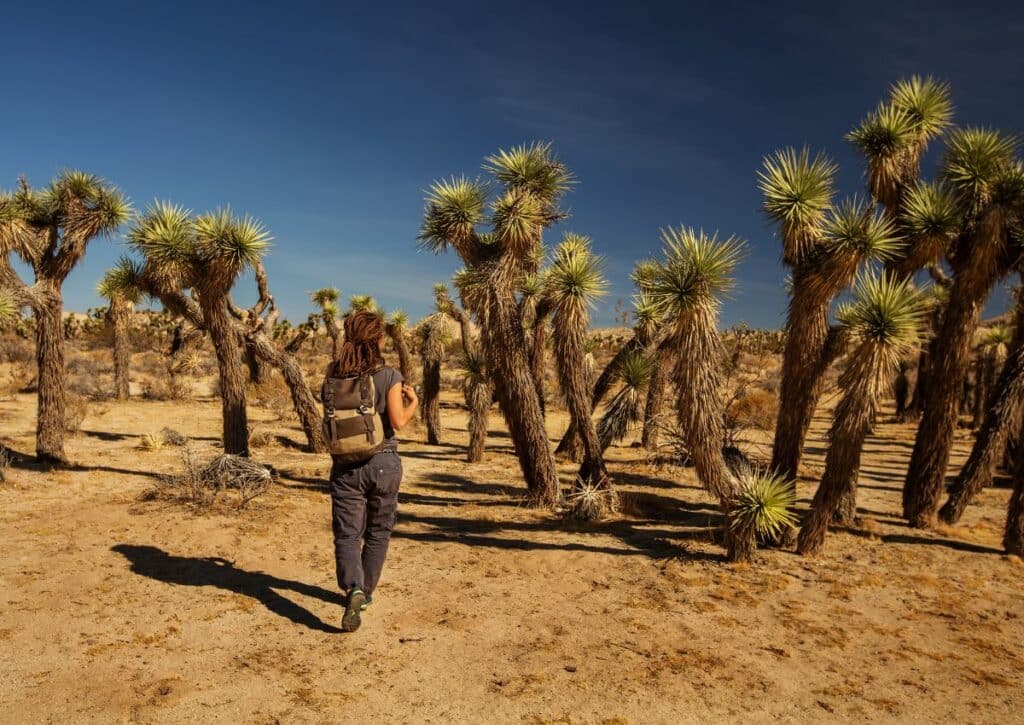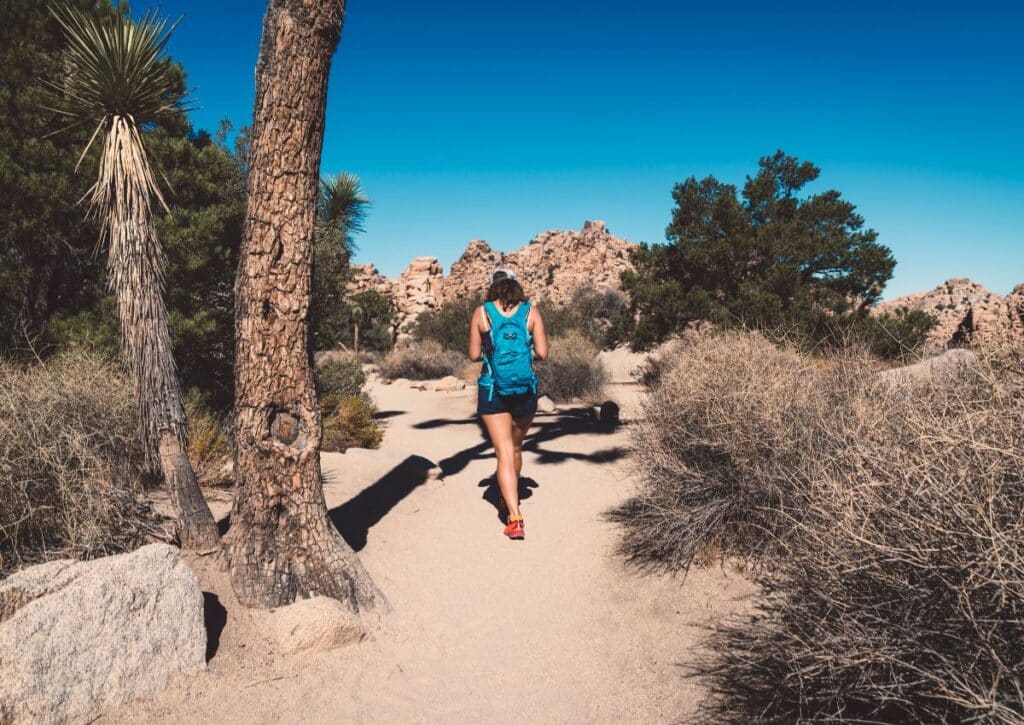Discover 18 Fun Facts about Joshua Tree National Park! Explore its unique desert beauty, wildlife, and starry skies for an unforgettable adventure.
Welcome to the wild and whimsical world of Joshua Tree National Park! Nestled in Southern California, about 130 miles east of the glitz and glamour of Los Angeles, this park is a universe of its own.
Known for its surreal landscape peppered with quirky Joshua trees and dramatic boulder formations, it’s no wonder over 2.5 million people flock here each year.
But hold onto your hats, because we’re about to dive into 18 fascinating facts that make Joshua Tree a true desert gem. From its wildlife that thrives in the arid climate to the best spots for gazing up at a star-filled sky, there’s a treasure trove of discoveries waiting.
Whether you’re a seasoned park-goer or planning your first visit, these fun tidbits will give you a sneak peek into what makes Joshua Tree National Park an unforgettable adventure. So, let’s hit the road and uncover the secrets of this iconic desert wonderland!
Praying Trees
Hey, have you ever wondered why it’s called Joshua Tree National Park? It’s actually a cool story. The name comes from the unique Joshua trees there, which are exclusive to the Mojave Desert.
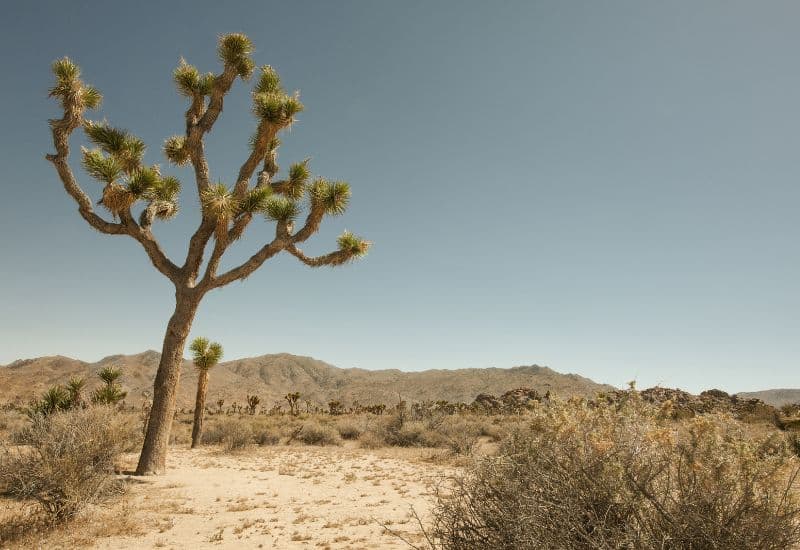
Picture this: the early Mormon settlers come across these trees with their arms stretching upwards and it reminds them of the biblical figure Joshua, praying and reaching up to the sky.
It’s like nature mirroring a story from the Bible. These trees aren’t just unique in their shape; they’re a symbol of guidance and hope, just like the character they’re named after.
Every time I see them, it feels like they’re telling their own ancient story, right in the middle of the desert.
Two Deserts, One Park
Did you know Joshua Tree National Park is like a two-in-one special? It’s where the Mojave and Colorado Deserts meet, creating an incredible mix of landscapes.
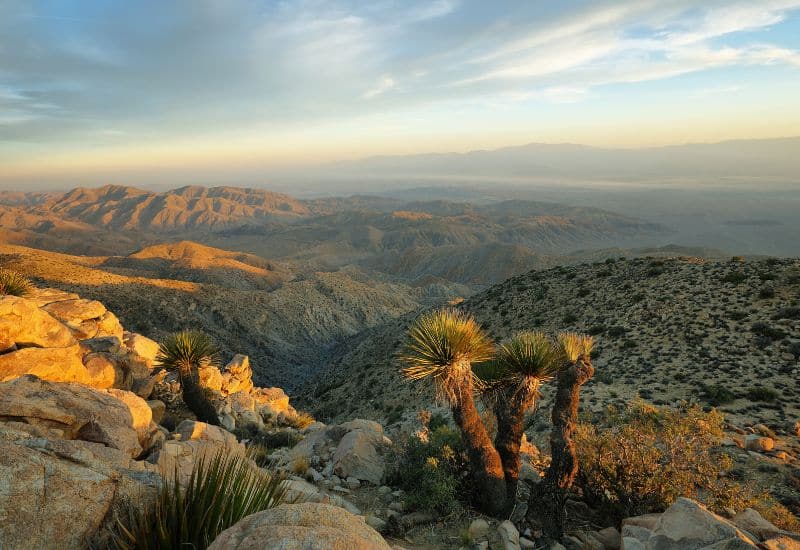
In the higher Mojave area, you find the Joshua trees standing tall, but as you move to the lower Colorado Desert, the scenery shifts dramatically. It’s fascinating how one park can host such diverse ecosystems.
This blend means a crazy variety of plants and wildlife – from cacti to roadrunners and even coyotes. It’s like a showcase of nature’s versatility, all in one place.
The diversity here is just mind-blowing, making it a perfect spot for anyone who loves exploring the wonders of nature.
Joshua Tree’s Evolution
So, Joshua Tree wasn’t always the famous national park we know today. It started as a national monument back in 1936. Imagine, for years it was this under-the-radar spot.
Then, in 1994, it got upgraded to a national park. And it’s massive – nearly as big as Rhode Island! Over the years, it’s transformed from a lesser-known area into a must-visit destination.
It’s not just about its size; it’s the history, the evolution, and the sheer variety of experiences it offers. From rock climbing to stargazing, it’s a place that has grown in both size and wonder, making it a true marvel in the world of national parks.
The Ancient Giants: Joshua Tree’s Centuries-Old Residents
You won’t believe this, but some Joshua trees in the park are like living history books. The oldest one is over 300 years old! Just think about that for a second. This tree has been standing since before the United States was even a country.
Most Joshua trees live for about 150 years, which is still pretty impressive. It’s amazing to walk among these ancient giants and think about all the changes they’ve witnessed.
Each one is a testament to the resilience and beauty of nature in the harsh desert environment. It’s like they’re the wise old sages of the desert, silently watching over the landscape for centuries.
A Desert Bloom: The Diverse Flora of Joshua Tree
Joshua Tree National Park isn’t just about the Joshua trees, though they’re the stars. The park is actually a treasure trove of plant life, with over 750 different species!
You’ve got the majestic ocotillo, which looks like something out of a Dr. Seuss book, and the flowering chollas that light up the desert with their colors.
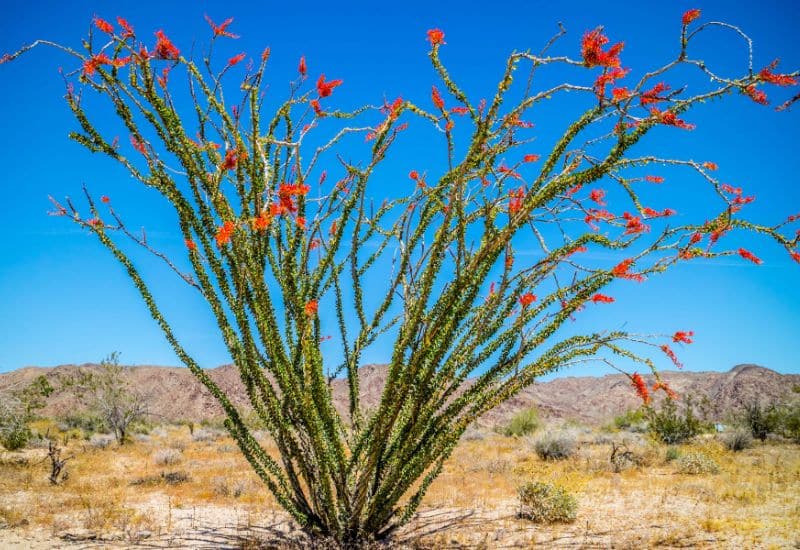
And then there’s the jumping cholla cactus – but watch out, you don’t want to get too close to those spiky guys! The variety of plants here is just mind-boggling.
It’s like every turn on the trail brings you face-to-face with another weird and wonderful desert dweller. The park’s a real-life botanic garden, but wild and untamed.
Desert Dwellers: The Wildlife of Joshua Tree
And it’s not just plants that make Joshua Tree special. The wildlife here is like a who’s who of desert critters. You’ve got coyotes, which are like the clever tricksters of the desert.
Then there are the bobcats, stealthy and elusive. But my favorites are the roadrunners – yes, they’re real, and no, they don’t go ‘beep beep’! Let’s not forget the kangaroo rats, black-tailed jackrabbits, and the tough desert tortoises.
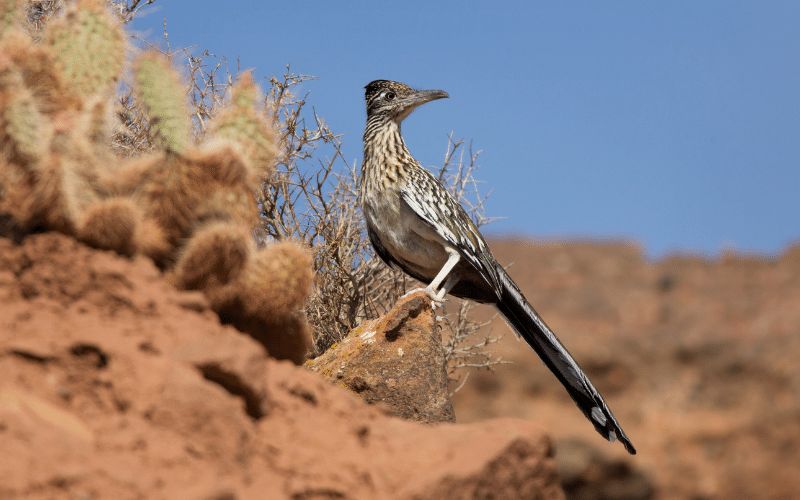
And if you’re into birdwatching, this place is a paradise with over 250 bird species. It’s incredible how all these animals have adapted to the harsh desert conditions. Each one plays a part in the park’s ecosystem, making it a vibrant and dynamic place.
A Climber’s Dream and Hollywood’s Backdrop
Joshua Tree National Park is a treasure trove for climbers, with more than 300 climbing formations. It’s a rock climber’s paradise where every ascent brings a new thrill.
And when you’re done climbing, you can kick back in one of the park’s nine campgrounds. Imagine spending your evening under the stars, right where you’ve spent the day conquering peaks.
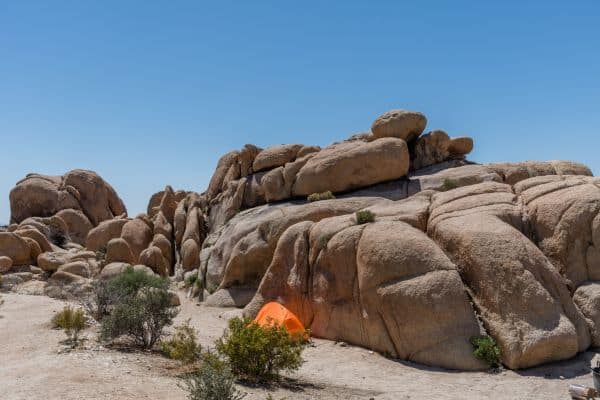
Adding to the park’s allure, it’s also a popular location for Hollywood films. So, as you’re navigating those rocks, you’re in the same stunning landscape that’s graced the big screen. It’s a blend of adventure and movie magic, all in one incredible setting.
Keys View
At Joshua Tree, don’t miss the chance to visit Keyes View. It’s not just any overlook – it’s a window to an incredible panorama of the Coachella Valley.
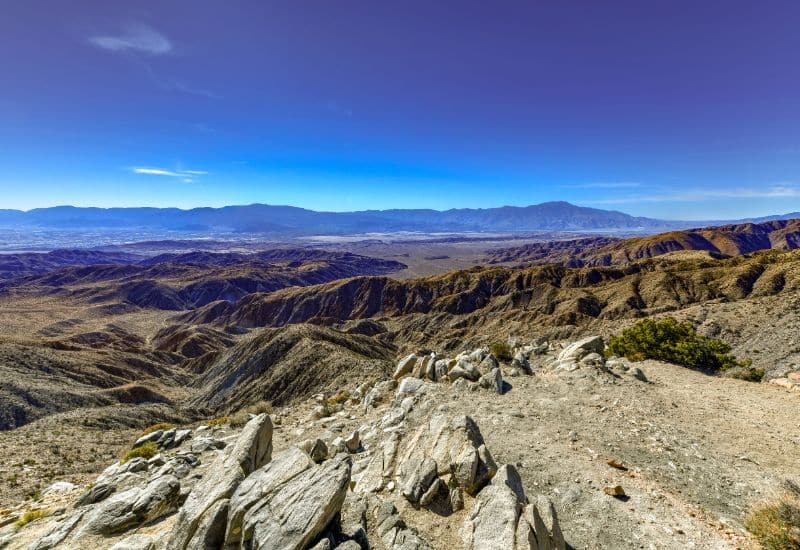
Perched at an elevation of 5,185 feet, this spot offers views that will leave you in awe. On a clear day, you can even see Palm Springs in the distance, like a desert oasis. It’s the perfect place to feel on top of the world, soaking in the vast beauty of the landscape stretching out before you.
Cholla Cactus Garden: A Desert Glow at Sunset
Then there’s the Cholla Cactus Garden, a must-see spectacle, especially as the sun begins to set. This garden is home to a dense concentration of cholla cacti, set against a backdrop of rugged rock formations.
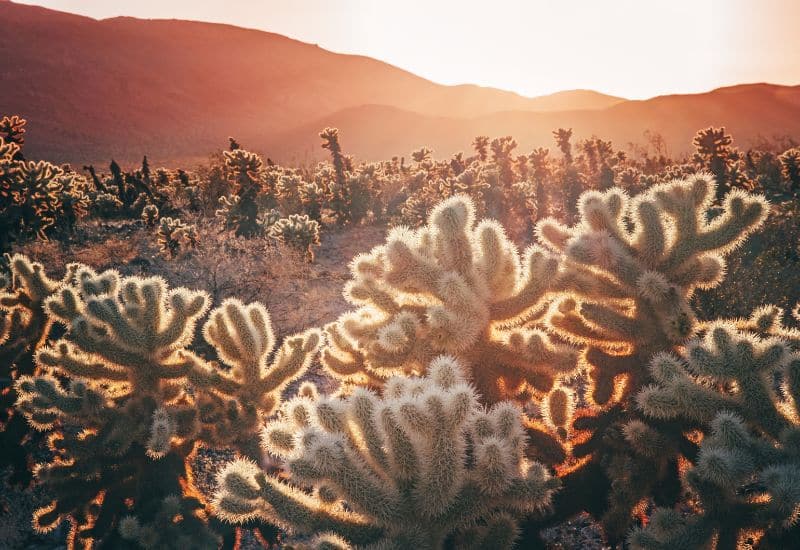
But the real magic happens at sunset when the cholla cacti seem to light up, glowing in the fading light. It’s a stunning natural display, transforming the landscape into a glowing field of light and shadow.
This moment of desert beauty at dusk is truly a sight to behold.
Skull Rock: Joshua Tree’s Iconic Natural Sculpture
In Joshua Tree, there’s a rock formation that’s as intriguing as it is famous – Skull Rock. This isn’t just any boulder; it’s a natural masterpiece. With two large hollows for eyes and a perfectly shaped mouth, this granite boulder eerily resembles a giant skull.
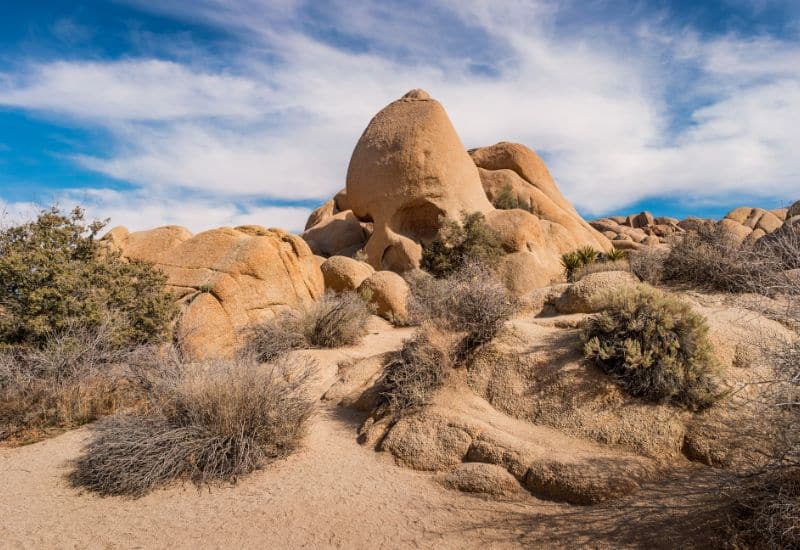
It’s easy to see how it got its name! Skull Rock has become one of the park’s most iconic sights, drawing visitors for that perfect photo op. It’s a striking example of how nature can create art, sculpting something both mysterious and fascinating.
Whether you’re exploring or just passing by, Skull Rock is a sight that encapsulates the unique charm of Joshua Tree National Park
Stargazing Spectacle
Joshua Tree isn’t just a daytime wonder; it’s a nighttime marvel too. Thanks to its clear and dry conditions, it’s one of the best spots in Southern California for stargazing.
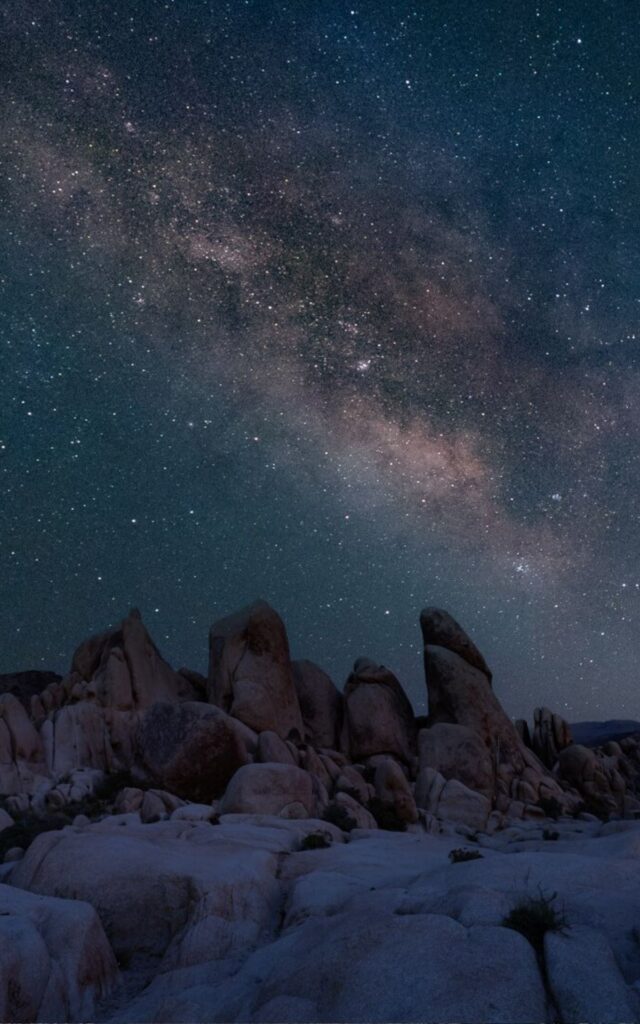
Imagine lying back and watching the night sky come alive with stars and meteors. It’s like a cosmic show, with the Milky Way often visible to the naked eye. The experience of seeing that sprawling galaxy stretched across the sky is nothing short of magical.
It’s moments like these, under the vast starlit sky, that make Joshua Tree a truly special place for both adventurers and dreamers alike.
Super Bloom Spectacle
In certain years, Joshua Tree National Park transforms into a vibrant tapestry of color, thanks to the “super bloom.” This natural phenomenon occurs in wetter years when the usually arid landscape bursts into life with colorful wildflowers.
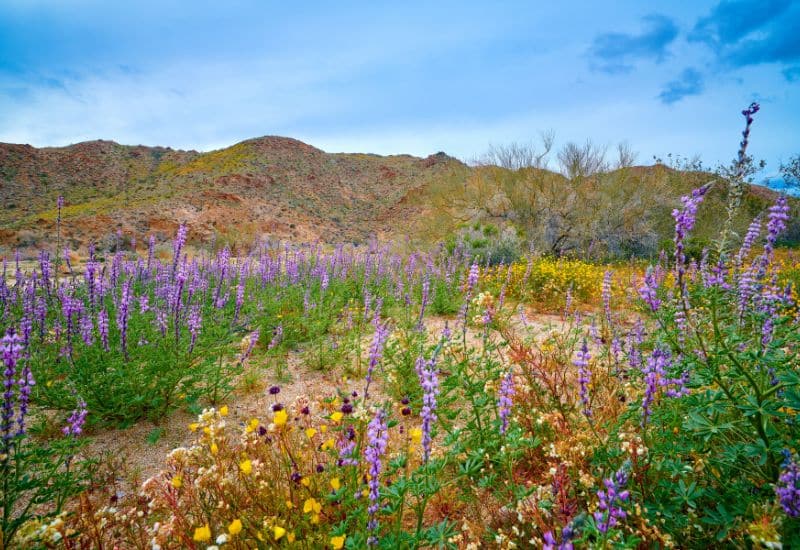
It’s a breathtaking sight – valleys and hillsides blanketed in a rainbow of wildflowers, drawing nature enthusiasts and photographers alike. The superbloom turns the park into a living canvas, showcasing the resilience and beauty of nature in the desert.
It’s a rare and spectacular event that highlights a different, softer side of Joshua Tree, attracting visitors from far and wide to witness this floral wonder.
Desert Heat to Cool Retreat
Visiting Joshua Tree National Park can be a game of seasons. In the summer, the desert heat cranks up, often pushing temperatures beyond 100°F. It’s a sizzling experience, and while it has its own stark beauty, it can be pretty intense.
That’s why the cooler months, from October to April, are often considered the best time to visit. During this period, the park becomes a more comfortable and inviting place.
The milder temperatures make it ideal for hiking, climbing, and exploring without the scorching heat. So, if you’re planning a trip, aim for these cooler months to fully enjoy all the wonders Joshua Tree has to offer, minus the extreme heat.
Summer Surprises
A heads-up for summer visitors to Joshua Tree National Park: the season brings more than just heat. During the monsoon months, the park can experience sudden and dramatic flash floods.
These downpours, though brief, can send water rushing through the normally dry washes and canyons. It’s a powerful display of nature’s force, reminding us of the ever-changing desert environment.
While these flash floods are part of the natural cycle and can be fascinating to witness from a safe distance, they’re also a reminder to stay aware and prepared if you’re visiting during this time.
Always check weather forecasts and park advisories to ensure a safe and enjoyable trip.
Unique Desert Dwellers
Joshua trees, the iconic symbols of Joshua Tree National Park, are unique to the Mojave Desert. These quirky and fascinating trees aren’t just randomly scattered across any desert landscape; they require the specific climate and soil conditions found only in the Mojave.
This makes them exclusive residents of this region. But their role goes beyond just adding character to the scenery. Joshua trees are crucial to the desert ecosystem, providing habitat and resources for various desert wildlife.
They stand as natural pillars of the Mojave, playing a vital part in maintaining the ecological balance. So, when you’re wandering among these distinctive trees, remember, you’re in the presence of a species that’s as specialized and integral to its environment as it is captivating to us.
Living Off the Land
In the Joshua Tree area, the resourcefulness of the Native American tribes like the Serrano and Cahuilla is truly remarkable. For centuries, these tribes have ingeniously used the yucca plant, a common and resilient desert dweller, for both food and tools.
They turned this tough plant into nourishing meals and crafted various tools from its parts. The yucca’s fibrous leaves were ideal for making ropes, baskets, and even sandals, while its blooms and seeds provided a vital food source.
This deep connection and understanding of the land’s resources highlight the ingenuity and adaptability of the Native peoples in the harsh desert environment. Their legacy is a fascinating aspect of the Joshua Tree story, showcasing a harmonious and sustainable relationship with nature.
A Guide Through her Visitor Centers
Joshua Tree National Park isn’t just a vast wilderness to wander – it’s a place to learn and explore, thanks to its four visitor centers. Each center – Joshua Tree, Oasis, Cottonwood, and Black Rock – serves as a gateway to understanding the park’s wonders.
They’re not just stops for maps and restrooms; these centers offer fascinating exhibits and educational programs. Whether you’re curious about the park’s geology, flora and fauna, or cultural history, these centers provide valuable insights.
They’re perfect starting points for any visit, helping you to get the most out of your Joshua Tree experience. So, make sure to drop by these visitor centers and enrich your adventure with knowledge about this unique and captivating landscape.
A Muse in the Desert
Joshua Tree National Park is more than just a natural wonder; it’s a source of inspiration for artists, musicians, and free spirits. There’s something about the stark, resilient beauty of this desert landscape that sparks creativity.
The unique blend of rugged rock formations, iconic Joshua trees, and vast, open skies creates a backdrop that’s both harsh and mesmerizing. It’s no wonder that this park has become a symbol of the peacefulness and enduring allure of the Mojave Desert.
For many, Joshua Tree is a place of reflection and artistic expression, where the quiet and isolation of the desert provide a canvas for creativity. Whether it’s through photography, music, painting, or simply soaking in the serene vibes, Joshua Tree continues to captivate and inspire those who visit.
Also Read
10 STOPS FROM PALM SPRINGS TO JOSHUA TREE NATIONAL PARK (ITINERARY INCLUDED)
DECADES-TESTED: TOP 17 HIKES IN JOSHUA TREE NATIONAL PARK!
12 UNMISSABLE STOPS FROM LOS ANGELES TO JOSHUA TREE (ITINERARY INCLUDED)
10 ULTIMATE THINGS TO DO IN JOSHUA TREE NATIONAL PARK ON EVERY ITINERARY!
Conclusion
As we wrap up our journey through the captivating landscape of Joshua Tree National Park, it’s clear that this place is more than just a park – it’s a natural wonderland. With its unique desert ecosystems, the iconic forests of Joshua trees, thrilling rock climbing opportunities, and skies sprinkled with stars, every visit here promises an adventure that’s both unforgettable and awe-inspiring.
From the resilient wildlife that calls this park home to the serene beauty of its starlit nights, Joshua Tree is a testament to the wonders of the natural world. Whether you’re scaling a rock formation or simply enjoying the quiet majesty of the desert, this park has something for everyone.
So, the next time you find yourself in Southern California, remember there’s a magical experience waiting for you in Joshua Tree. Be sure to explore these 21 fun facts in person and immerse yourself in the enchanting beauty and adventure that this extraordinary national park has to offer. Trust us, it’s an experience you won’t want to miss!

